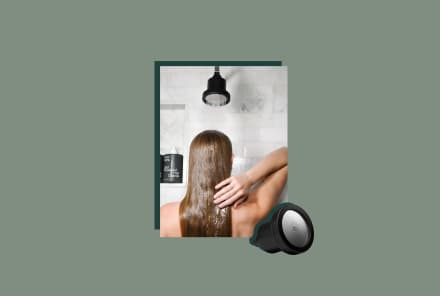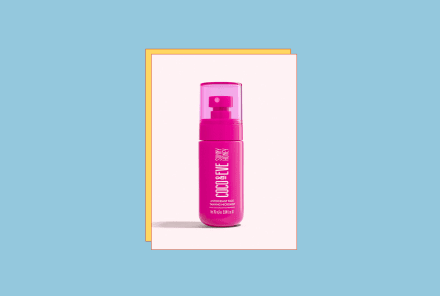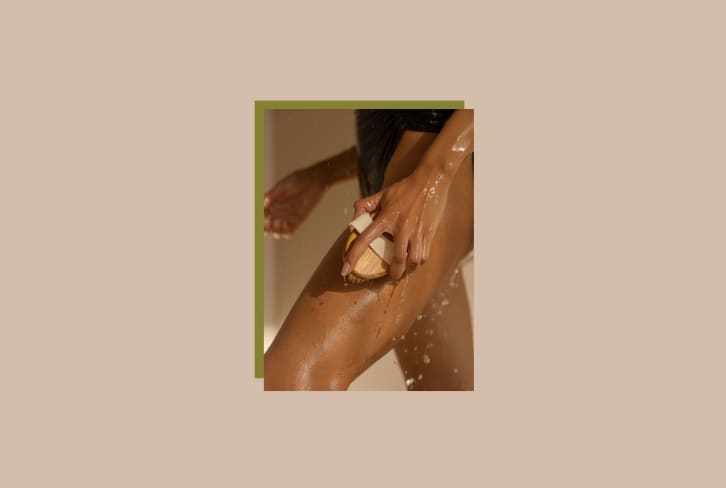Advertisement
Women With ADHD & ASD Are Starting To Get Accurately Diagnosed — But It's Decades Late



"You don't have ADHD," my best friend stated with conviction. "My brother's ADHD is so bad he can't function in school without medication. You never would've been able to get the grades you did, let alone graduate."
It was the fall after we graduated college, and I was struggling to function without the structure and routine that school provided. But my friend was right—most people I knew with attention-deficit/hyperactivity disorder (ADHD) had a lower GPA because they couldn't pay attention in class or remember to do their homework.
Her brother was a textbook example. During our decade-long friendship, I had seen how his symptoms affected his schoolwork, friendships, family dynamics, and more. I also watched their mom, a professional therapist, use her expertise to advocate for him and set systems in place to help him succeed.
Surely, she would have noticed my symptoms by now if I had ADHD, right? After all, I practically lived at their house during high school and had spent countless hours with their family. "She must be right," I accepted.
Another four and a half years passed before I got my official ADHD diagnosis at age 26.
How girls with ADHD & ASD slip through the cracks.
My diagnosis story is not uncommon—many women with ADHD and autism spectrum disorder (ASD) have subtle presentations of symptoms that go unnoticed by teachers, parents, and doctors.
According to the CDC, boys are two times more likely1 to be diagnosed with ADHD than girls during childhood, even though epidemiologic surveys show the sex ratio of adult ADHD is 1:12.
ASD is consistently found to be more prevalent in males than females as well, but a 2017 meta-analysis from the Journal of the American Academy of Child & Adolescent Psychiatry revealed that the true male-to-female ratio of ASD is not 4:1, as previously thought: After adjusting for studies in which participants were evaluated for ASD, rather than relying on previous diagnoses, researchers discovered the true sex ratio is closer to 3:13.
The data suggests that girls aren't missing the criteria for these disorders; they aren't being assessed in the first place because of male-focused research and gender bias.
What ADHD & ASD look like in females.
Neurodivergent girls and women (i.e., those with ADHD and ASD) tend to internalize their symptoms in order to behave in a "socially acceptable" way—a process called masking.
Oftentimes, masking is unintentional and unconscious. While neurodivergent males also use masking in some situations (e.g., a job interview or social outing with co-workers), girls and women have the added societal pressure of, well, being female.
As a result, many neurodivergent girls and women develop people-pleasing tendencies, make extra efforts to match the social behaviors of their neurotypical peers to avoid being "othered," and overcompensate for their academic and social struggles by putting more energy into homework and making friends.
Female presentations of ADHD.
There are three main presentations of ADHD: predominantly inattentive, predominantly hyperactive-impulsive, and combined inattentive and hyperactive.
According to Lidia Zylowska, M.D., a psychiatrist with the University of Minnesota Medical School and author of Mindfulness Prescription for Adult ADHD, girls tend to have predominantly inattentive symptoms4 rather than significant hyperactive and impulsive symptoms.
"They're less loud and disruptive in class and more likely to suffer quietly and without being noticed or helped," she says. "They may be forgetful, messy, spacey, and missing social cues."
While research and anecdotal evidence indicate that girls and women tend to exhibit inattentive symptoms of ADHD5, many have hyperactive and impulsive symptoms6 as well, which are often internalized.
Inattentive symptoms:
- Missing important details and/or making careless mistakes
- Difficulty sustaining attention
- Struggling to follow instructions (especially verbal)
- Having trouble staying organized
- Misplacing or losing items easily
- Forgetfulness in daily activities
- Becoming easily distracted
Hyperactive-impulsive symptoms:
- Talking excessively
- Speaking without thinking
- Appearing to be daydreaming while their mind is going "a mile a minute"
- Difficulty keeping the mind on one topic
- Making friends easily but struggling to maintain friendships
- Self-harm and/or activities that require extreme (read: unhealthy) discipline
- Compensatory strategies—i.e., working two to three times harder than peers to be equally successful
- Fearing social rejection from friends and peers
- Remaining in unhealthy relationships
"Without an explanation or support, ADHD may have a bigger impact on self-esteem and sense of self-doubt. Girls may be more likely to seek approval, mask their symptoms, or become people-pleasers or perfectionists to counteract their ADHD symptoms," Zylowska explains.
Female presentations of ASD.
Individuals with ASD primarily struggle with social interactions, communication, and behavioral symptoms7.
Social interaction and communication symptoms:
- Difficulty reading and responding to social cues
- Struggling to start a conversation or keep it going
- Having trouble expressing emotions or recognizing them in others
- Missing nonverbal communication
- Resistance to touching
- Inappropriate or nonexistent facial expressions
- Excessively talking about a favorite subject without regard for others' lack of interest in the topic
Behavioral pattern symptoms:
- Repetitive motions, such as rocking back and forth
- Establishing routines or rituals that can't be interrupted
- Repetitive words and phrases in speech
- Experiencing sensations of light and sound more intensely than others
- Fixating on particular subjects, objects, or activities
- Having preferences or aversions to particular foods and food textures
While symptoms of ASD in females aren't that different from males, girls and women tend to mask their symptoms better than their male counterparts—especially if they're on the high-functioning end of the autism spectrum.
Along with the typical social interaction symptoms and behavioral pattern symptoms, females with ASD use common forms of masking8, such as:
- Forcing themselves to make eye contact during conversations
- Preparing jokes or phrases ahead of time to use in social situations
- Mirroring or mimicking the social behavior of others around them
- Imitating facial expressions and gestures
The rise of ADHD & ASD diagnoses in women.
More and more women are seeking neurodivergent diagnoses later in life, and not just in early adulthood—many women report getting diagnosed well past their 60s9.
The stigma that ADHD and ASD are disorders that primarily impact school and social interactions in early childhood can be both isolating and damaging for women as they start their adult lives, work (hard) to advance in their careers, and navigate the many stages of parenthood.
Because of my good grades and the structure and routine that school provided, my ADHD symptoms slipped under the radar. In college, I developed coping mechanisms to manage my ADHD without realizing it—like juggling three different calendars to make sure I didn't miss important deadlines and meetings, changing locations when I was switching tasks, and drinking caffeine to help me focus during all-nighters (which I had a lot of, thanks to my poor time management skills and tendency to procrastinate).
But these habits were no replacement for an official ADHD diagnosis and treatment. Once the scaffolding of academic structure and rigor fell away after college, I found it impossible to function like I used to. I felt lazy, unmotivated, and more than anything, frustrated by my inability to transition into adulthood with ease.
This feeling continued through the first few years of my career. Until last year, when I saw videos popping up on social media about how ADHD presents differently in women than men.
Watching videos from How To ADHD, SaveTimeShan, and Hayley Honeyman (who also has ASD) on social media made me realize that I had not a couple but many symptoms of ADHD. They just look different, because I'm an adult woman—not a teenage boy.
This content is critical not only for women who suspect they may have ADHD and ASD, but also for parents of little girls who are quietly struggling with symptoms, teachers with those little girls in their classes, and health care professionals tasked with unlearning gender bias in neurodivergent conditions.
"We need more education of teachers, clinicians, parents, and the public about the aspects of ADHD or ASD that are not part of the DSM-V criteria (which tend to be skewed toward boys)," Zylowska says. "With more education that gender may change how symptoms show up or are dealt with, clinicians can factor those differences into a comprehensive evaluation of girls and women."
Zylowska adds that the way we approach teaching will need to change to better accommodate neurodivergent learning. "Each child will have different strengths and needs, so it is often an individualized process," she says. A few examples of ways to support neurodivergent learning include flexible seating, increasing emphasis on material organization and executive function, and "chunking" of instructions and assignments.
Takeaway of the trend.
Girls with ADHD and ASD are often overlooked because they aren't as disruptive as their male peers and they internalize and mask many of their symptoms.
But thanks to increasing awareness of ADHD and ASD presentations in females on social media, women with these conditions are learning why they struggle with day-to-day tasks and activities more than their peers. Armed with a proper diagnosis, neurodivergent women will be better equipped to navigate their careers and personal lives than ever before.
9 Sources
- https://www.cdc.gov/nchs/data/hus/2019/012-508.pdf
- https://jamanetwork.com/journals/jamapsychiatry/fullarticle/2522750
- https://pubmed.ncbi.nlm.nih.gov/28545751/
- https://pubmed.ncbi.nlm.nih.gov/34231220/
- https://pubmed.ncbi.nlm.nih.gov/18268458/
- https://pubmed.ncbi.nlm.nih.gov/28722868/
- https://pubmed.ncbi.nlm.nih.gov/30852705/
- https://pubmed.ncbi.nlm.nih.gov/33220170/
- https://pubmed.ncbi.nlm.nih.gov/21767088/
Watch Next
Enjoy some of our favorite clips from classes
Enjoy some of our favorite clips from classes
What Is Meditation?
Mindfulness/Spirituality | Light Watkins
Box Breathing
Mindfulness/Spirituality | Gwen Dittmar
What Breathwork Can Address
Mindfulness/Spirituality | Gwen Dittmar
The 8 Limbs of Yoga - What is Asana?
Yoga | Caley Alyssa
Two Standing Postures to Open Up Tight Hips
Yoga | Caley Alyssa
How Plants Can Optimize Athletic Performance
Nutrition | Rich Roll
What to Eat Before a Workout
Nutrition | Rich Roll
How Ayurveda Helps Us Navigate Modern Life
Nutrition | Sahara Rose
Messages About Love & Relationships
Love & Relationships | Esther Perel
Love Languages
Love & Relationships | Esther Perel

















